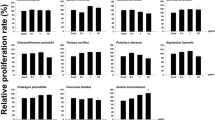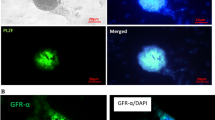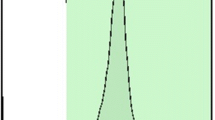Abstract
Licorice (glycyrrhiza uralensis) is known as an herb with detoxication, and it has been widely used in clinical prescription of Oriental herbal medicine. Studies on the effects of licorice in the reproductive system were very rare, especially in spermatogenesis. In order to elucidate the effects of licorice on spermatogonial proliferation and spermatocyte differentiation during neonatal mice spermatogenesis, the organ culture model of testis tissue from neonatal C57BL/6N mice (born 6 d) was established. Then, in the presence of licorice extract (LE), the proliferation activity of spermatogonia was identified with the positive rate quantitative analysis of 5-bromo-2-deoxyuridine (BrdU) and anti-proliferating cell nuclear antigen (PCNA) antibody by immunohistochemical staining. The results showed that, compared to the control group, the percentage of positive cells by BrdU staining enhanced dramatically and that the expression of PCNA protein increased significantly in the spermatogonia from the LE group and showed a concentration-dependent manner (P < 0.05). This indicated that the LE can significantly promote the proliferation of spermatogonia in the spermatogenesis of neonatal mice. Furthermore, proteins related to spermatocyte differentiation, synaptonemal complex protein 3 (SCP3) and meiotic recombinant protein Spo11, were detected by immunohistochemical staining. The results showed that the differentiated spermatocyte in the LE group was significantly increased compared with that of the control group and showed a concentration-dependent manner (P < 0.05). The above results suggested that the LE can significantly accelerate the proliferation of spermatogonia and the differentiation of spermatocytes in the testicular tissue of the neonatal mice, which may be a potential drug for male infertility.


Similar content being viewed by others
References
Abé S (2004) Hormonal control of meiosis initiation in the testis from Japanese newt, Cynops pyrrhogaster. Zool Sci 21(7):691–704
Al-Dujaili EA, Kenyon CJ, Nicol MR, Mason JI (2011) Liquorice and glycyrrhetinic acid increase DHEA and deoxycorticosterone levels in vivo and in vitro by inhibiting adrenal SULT2A1 activity. Mol Cell Endocrinol 336(1–2):102–109
Asl MN, Hosseinzadeh H (2008) Review of pharmacological effects of Glycyrrhiza sp. And its bioactive compounds. Phytother Res 22(6):709–724
Bordbar N, Karimi MH, Amirghofran Z (2012) The effect of glycyrrhizin on maturation and T cell stimulating activity of dendritic cells. Cell Immunol 280(1):44–49
Cho H, Noh KH, Chung JY, Takikita M, Chung EJ, Kim BW, Hewitt SM, Kim TW, Kim JH (2014) Synaptonemal complex protein 3 is a prognostic marker in cervical cancer. PLoS One 9(6), e98712
Choi EM (2012) Liquiritigenin isolated from Licorice stimulates osteoblast function in osteoblastic MC3T3–E1 cells. Int Immunopharmacol 12(1):139–143
Giwercman A, Carlsen E, Keiding N, Skakkebaek NE (1993) Evidence for increasing incidence of abnormalities of the human testis: a review. Environ Health Perspect 101(2):65–71
He Y, Zhang X, Zeng X (2011) Effects of licorice on p53 mRNA stability and expression during the proliferation of intestinal crypt stem cells. Zhongguo Zhong Xi Yi Jie He Za Zhi 31(12):1669–1673
Henkel R (2012) Sperm preparation: state–of–the–art–physiological aspects and application of advanced sperm preparation methods. Asian J Androl 14(2):260–269
Hermo L, Pelletier RM, Cyr DG, Smith CE (2010) Surfing the wave, cycle, life history, and genes/proteins expressed by testicular germ cells. Part 1: background to spermatogenesis, spermatogonia, and spermatocytes. Microsc Res Tech 73(4):241–278
Hua H, Liang Z, Li W, Meng Y, Li X, Zhang Z, Lu C, Meng J, Shan F (2012) Phenotypic and functional maturation of murine dendritic cells (DCs) induced by purified Glycyrrhizin (GL). Int Immunopharmacol 12(3):518–525
Huckins C, Oakberg EF (1978) Morphological and quantitative analysis of spermatogonia in mice testes using whole mounted seminiferous tubules, I. The normal testes. Anat Rec 192(4):519–528
Inagaki A, Schoenmakers S, Baarends WM (2010) DNA double strand break repair, chromosome synapsis and transcriptional silencing in meiosis. Epigenetics 5(4):255–266
Kierszenbaum AL, Tres LL (1978) RNA transcription and chromatin structure during meiotic and postmeiotic stages of spermatogenesis. Fed Proc 37(11):2512–2516
Kuttan G, Pratheeshkumar P, Manu KA, Kuttan R (2011) Inhibition of tumor progression by naturally occurring terpenoids. Pharm Biol 49(10):995–1007
Lee SR, Yon JM, Kim MR, Jin Y, Baek IJ, Kim YB, Ahn B, Lee BJ, Yun YW, Nam SY (2007) Effects of licorce on the gene expression of glutathione peroxidase family in the reproductive systems of male rats. Inst Lab Anim Res J 23(1):69–75
Lehmann AR, Fuchs RP (2006) Gaps and forks in DNA replication: rediscovering old models. DNA Repair (Amst) 5(12):1495–1498
Livera G, Delbes G, Pairault C, Rouiller-Fabre V, Habert R (2006) Organotypic culture, a powerful model for studying rat and mouse fetal testis development. Cell Tissue Res 324(3):507–521
Makino T (2014) 3-Monoglucuronyl glycyrrhretinic acid is a possible marker compound related to licorice-induced pseudoaldosteronism. Biol Pharm Bull 37(6):898–902
Malekinejad H, Mirzakhani N, Razi M, Cheraghi H, Alizadeh A, Dardmeh F (2011) Protective effects of melatonin and Glycyrrhiza glabra extract on ochratoxin A-induced damages on testes in mature rats. Hum Exp Toxicol 30(2):110–123
Martin MD, Sherman J, van der Ven P, Burgess J (2008) A controlled trial of a dissolving oral patch concerning glycyrrhiza (licorice) herbal extract for the treatment of aphthous ulcers. Gen Dent 56(2):206–210, quiz 211–212, 224
McLaren A (1984) Meiosis and differentiation of mouse germ cells. Symp Soc Exp Biol 38:7–23
Moldovan GL, Pfander B, Jentsch S (2007) PCNA, the maestro of the replication fork. Cell 129(4):665–679
Parks JE, Lee DR, Huang S, Kaproth MT (2003) Prospects for spermatogenesis in vitro. Theriogenology 59(1):73–86
Sato T, Katagiri K, Gohbara A, Inoue K, Ogonuki N, Ogura A, Kubota Y, Ogawa T (2011) In vitro production of functional sperm in cultured neonatal mouse testes. Nature 471(7339):504–507
Saumendu DR, Raj KP, Suvakanta D, Jashabir C, Biswajit D (2014) Hair growth stimulating effect and phytochemical evaluation of hydro–alcoholic extract of glycyrrhiza glabra. Global J Res Med Plants & Indigen Med 3(2):40–47
Shin S, Jang JY, Choi BI, Baek IJ, Yon JM, Hwang BY, Park D, Jeon JH, Nam SY, Yun YW, Kim YB (2008) Licorice extract does not impair the male reproductive function of rats. Exp Anim 57(1):11–17
Tamir S, Eizenberg M, Somjen D, Stern N, Sheach R, Kaye A, Vaya J (2001) Estrogen-like activity of glabrene and other constituents isolated from licorice root. J Steroid Biochem Mol Biol 78:291–298
Taupin P (2007) BrdU immunohistochemistry for studying adult neurogenesis: paradigms, pitfalls, limitations, and validation. Brain Res Rev 53(1):198–214
Tung NH, Shoyama Y, Wada M, Tanaka H (2014) Improved in vitro fertilization ability of mouse sperm caused by the addition of licorice extract to the preincubation medium. The Open Reproductive Science Journal 6:1–7
VandenBerg SR, Herman MM, Ludwin SK, Bignami A (1975) An experimental mouse testicular teratoma as a model for neuroepithelial neoplasia and differentiation. I. Light microscopic and tissue and organ culture observations. Am J Pathol 79(1):147–168
Wang X, Zhang H, Chen L, Shan L, Fan G, Gao X (2013) Liquorice, a unique "guide drug" of traditional Chinese medicine: a review of its role in drug interactions. J Ethnopharmacol 150(3):781–790
Wang ZY, Nixon DW (2001) Licorice and cancer. Nutr Cancer 39(1):1–11
Wen D, Liu Y, Zhu Y (2003) Inhibitory effects of licorice on sperm abnormalities induced by lead acetate in mice. J Jilin Univ (Medicine Edition) 30(6):868–870
Yoshida S (2012) Elucidating the identity and behavior of spermatogenic stem cells in the mouse testis. Reproduction 144(3):293–302
Zeng W, Avelar GF, Rathi R, Franca LR, Dobrinski I (2006) The length of the spermatogenic cycle is conserved in porcine and ovine testis xenografts. J Androl 27(4):527–533
Zhang J, Eto K, Honmyou A, Nakao K, Kiyonari H, Abé S (2011) Neuregulins are essential for spermatogonial proliferation and meiotic initiation in neonatal mouse testis. Development 138(15):3159–3168
Zhang Y, Luo H, Liu K, Jia H, Chen Y, Wang Z (2015) Antioxidant effects of liquorice (Licorice) extract during aging of longissimus thoracis muscle in Tan sheep. Meat Sci 105:38–45
Acknowledgments
This work was supported by grants from the Basic Research of Natural Science Foundation Program of Jilin Provincial Science and Technology Development (20130101147JC, 20150101131JC) and “Eleventh five-year” Scientific and Technological Research Project of Jilin Provincial Education Department (2015–399).
Author information
Authors and Affiliations
Corresponding author
Ethics declarations
Conflict of interest
The authors have declared no conflicts of interest.
Additional information
Editor: T. Okamoto
Rights and permissions
About this article
Cite this article
Wang, C., Jin, Y. & Jin, Y. Promoting effect of licorice extract on spermatogonial proliferation and spermatocytes differentiation of neonatal mice in vitro. In Vitro Cell.Dev.Biol.-Animal 52, 149–155 (2016). https://doi.org/10.1007/s11626-015-9966-z
Received:
Accepted:
Published:
Issue Date:
DOI: https://doi.org/10.1007/s11626-015-9966-z




